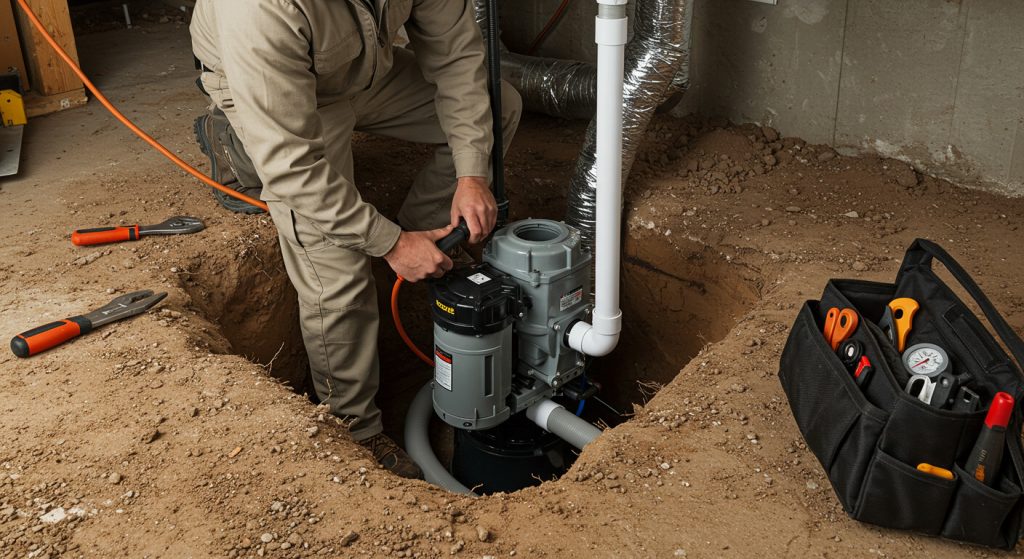Protect Your Basement from Flooding and Water Damage
In Willoughby, OH, spring rains and melting snow can cause serious water issues in basements. Without a properly installed sump pump, homeowners face risks like water damage, mold growth, and even foundation deterioration. Installing a sump pump is one of the best ways to safeguard your home year-round.

At Tom Schaefer Plumbing, Heating & Cooling, we’ve helped hundreds of local families protect their basements with professionally installed sump pumps—backed by our decades of experience and commitment to quality.
What Is a Sump Pump and How Does It Work?
A sump pump is designed to collect and redirect groundwater away from your home’s foundation. Installed in a sump pit in your basement or crawl space, it activates automatically when water levels rise—pumping the water safely outside.
There are two main types of sump pumps: submersible pumps, which are placed directly in the sump basin for high-volume removal, and pedestal pumps, which have a motor mounted above the basin for easier access and servicing.
Signs You Might Need a Sump Pump
Common signs include damp spots or standing water in the basement, musty odors, mold, water stains, or frequent sump pump cycling if one is already installed. Homes with a history of flooding or poor drainage are also strong candidates.
What to Expect During Professional Installation
Step 1: Site Evaluation
A licensed technician will inspect your basement and evaluate drainage patterns. We’ll recommend the right pump type and location—ensuring the installation complies with local codes and is tailored to your home’s needs.
Step 2: Excavating the Sump Pit
We carefully cut the concrete floor and dig a pit—typically about 2 feet deep and 18 inches wide—to house the sump basin. Our experienced team ensures structural safety and proper placement from start to finish.
Step 3: Installing the Pump and Drain Line
The sump pump is placed in the pit and connected to a discharge line that moves water away from your foundation. We install proper slope and backflow prevention, protecting your home against return flooding.
Step 4: Electrical Setup and Backup Systems
Our team safely connects the sump pump to your home’s electrical system. We often recommend adding a battery backup for peace of mind during storms or outages. All electrical work is done by certified professionals for full safety and code compliance.
Step 5: Final Testing and Calibration
We test the unit’s float activation, water evacuation efficiency, and system responsiveness to make sure everything runs smoothly before we leave your home.
Why Choose Professional Installation?
Professional sump pump installation helps prevent basement flooding, improves indoor air quality by reducing moisture and mold, increases home value, and offers peace of mind during storms. Done correctly, it also ensures long-term performance and compliance with local codes.
FAQs: Sump Pump Installation in Willoughby, OH
How much does installation cost?
Between $900 and $2,500, depending on pump type, drainage complexity, and electrical requirements.
How long does installation take?
Most jobs are completed within a single day.
Is a battery backup necessary?
Yes—especially in areas prone to storms or power outages.
How long do sump pumps last?
With proper maintenance, expect 7–10 years of reliable service.
Can I install one myself?
DIY is possible, but professional installation ensures safety, reliability, and full code compliance.
Did You Know?
Just one inch of basement water can cause thousands in damage. A sump pump is a small investment with big protective power.
Don’t wait for the next downpour—call Tom Schaefer Plumbing, Heating & Cooling today to schedule your sump pump installation with Northeast Ohio’s most trusted home service team.










